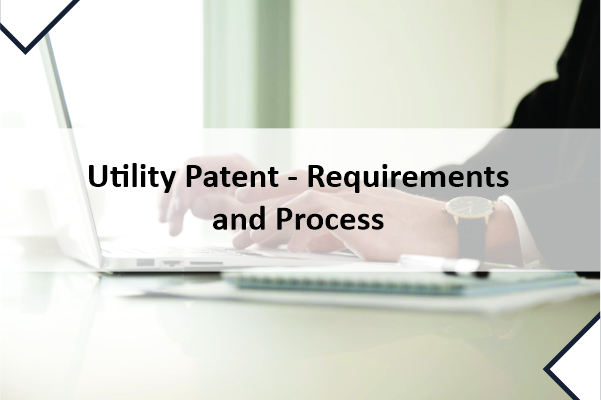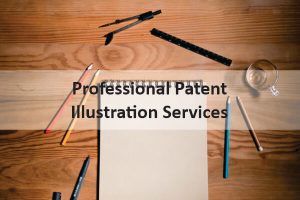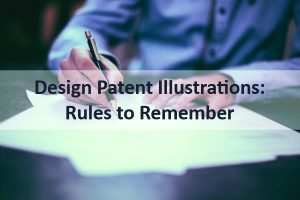When people talk about patent, they are most likely to talk about utility patents. This is because out of all the categories of patents filed with the USPTO, the majority of them are utility patent applications. But what is a utility patent? In general terms – a utility patent protects the usage and working of the invention. To be more precise, a utility patent tends to protect any machine, manufacture, process, and matter of composition, or any new or useful improvement thereof. A utility patent is enforceable for a period of 20 years.
How to fetch a Utility Patent?
Now that you are ready with your invention, or at least with a blueprint of it, but wondering how to proceed further.
To be on a safer side conduct patentability search for your invention. Although, not a compulsory step but it will help save your patent filing cost if your invention doesn’t follow the patentability criteria.
The very next step is to find a patent office of your jurisdiction to file a patent application. Ask yourself whether you want patent protection in your own jurisdiction or you are seeking protection in many countries. That is whether you want to go for a national phase application or an international application (PCT application). Be it any type of utility patent application, the very first step is to file an application in your own jurisdiction.
Document checklist for Utility Patent Application Filing
Once you find that your invention is novel or new, you can now proceed with the patent filing process. But, for that, you need to fulfill certain requirements of the patent office. The USPTO demands the following written essentials for effective patent application filing.
- Utility Patent Application Transmittal Form: it comprises the list of all the elements that make up a patent application. It is mandatory to complete it and signed by the applicant if you submit it with the application. If there are more than 1 inventor, then all of them need to sign the transmittal form o can give power of attorney (POA) to one of them to sign the correspondence on behalf of them.
- Fee Transmittal Form: this form describes the fees that you submit with the patent application. That is, with a non-provisional patent application, there are basic filing fees, search fees, and examination fees. This is applicable to small and micro-entity applicants as well. File the transmittal form at the time of patent filing; else this will incur a late filing surcharge. Also, if you file the application through offline mode, then you need to pay a non-electronic filing fee.
- Application Data Sheet: this sheet contains bibliographic data of inventor’s information, applicant information, correspondence address, application, domestic benefit, foreign priority, and assignee information. This form becomes even more important when an inventor assigns their rights to a company (assignee) and then the assignee files the application as the applicant.
- Small and Micro Entity Status: if you are a small or micro entity, get the advantage of certain fee discounts. If you qualify for the same, you need to submit no special forms to assert your entitlement to reduced fees. But, you should submit the exact small entity fee with the application after ensuring that you qualify for the small entity status.
- Specification: a written description of the invention. Make sure you write it in full, clear, concise and exact terms that any person knowledgeable in the same field of technology or science would understand the invention. But, do not include the information which is not related to the invention. following are the elements of the specification:
- Title of Invention: the length of the title is between 2 to 7 words and cannot exceed a character length of 500 words. The title is such that it describes the invention technically. It appears at the top of the first page or in the application data sheet. Note: do not use words such as “new” or “improved” as part of the title.
- Cross-Reference to Related Applications: if your application is with an earlier filed provisional or non-provisional patent application, you may identify the applications after the title of the invention.
- Statement regarding Federally Sponsored Research or Development: if you are a federally sponsored applicant, then you must state this fact at the beginning of the application.
- Reference to a “Sequence Listing” (if Applicable): information like gene sequence listings, tables of information (more than 50 pages). The specification must include a reference to the compact discs and the total number of discs (including duplicates) and the files on each disc. Keep the text strictly in ASCII format. Submit the sequence listing(s) via EFS-Web instead of on compact disc(s).
- Background of the Invention: provides a context to the invention. It describes any information known to the applicant in reference to the invention.
- Brief Summary of the Invention: this section gives a general idea of the claimed invention. It states the purpose, advantages of the invention and how it solves the existing problems that you mention in the background of the invention.
- Brief Description of Drawings: if there are drawings, include a list of all figures by number as Figure 1, Figure 2, etc. with corresponding statements explaining what each figure portrays.
- Detailed Description of the Invention: in the part explain the making and using of the invention in clear and concise terms. The description is such that anyone knows about that technology can make and use the invention without any extensive help.
- A Claim or Claims: claims define the part of the invention that you seek patent protection for. Write the claims in one line and, the least number of claims is 1.
- Abstract of the Disclosure: this part describes what is new about the invention in a narrative form. Begin it with a new page and do not exceed the word length from 150 words.
- Drawings: drawings make the invention more understandable. Hence, most of the utility patent applications contain drawings. Also, depict every feature of the invention just the way you specify in the claim(s).
- The Inventor’s Oath or Declaration: through the oath, the inventor acknowledges himself/herself as the original or joint inventor of the claimed invention. To certify that, the inventor includes his/her legal name and personally signs the document. Moreover, he/she provides it in a language understandable to the inventor. If not in English, then a translation of the language with a statement attesting its accuracy is a must.
Click Here to Download (Free Samples)
Our Approach:
Utility patent applications need finest of patent illustrations and drawings for better enforceability of their patents. Also, USPTO and other patent offices have strict guidelines for making patent illustrations. If you consider adding illustrations to your patent application, Patent Illustration Express is at your service. Our patent illustrators hold years of experience drafting illustrations as per the patent office guidelines. Also, you can avail our services at budget-friendly rates. For your reference, you can find our illustration samples by making a little inquiry. To know more, give a visit to Patent Illustration Express.
Other Related Articles:
Tips and tricks for High-Quality Patent Draft




